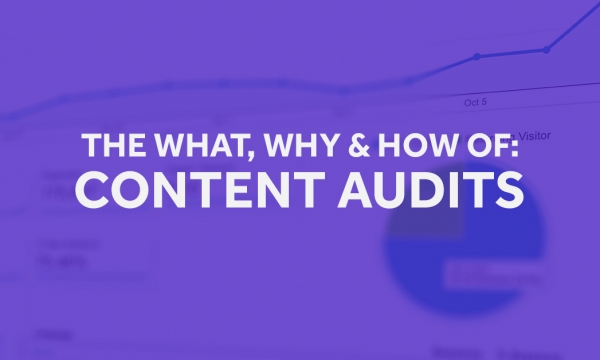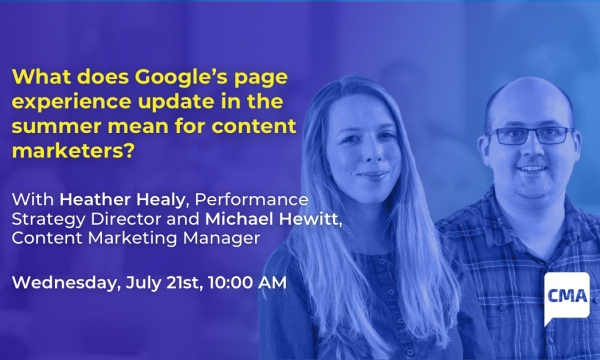
Adding the right kind of content to your website can drive traffic, build brand awareness and even increase sales. So when it comes to your digital content plan, make sure you set killer KPIs and then you’ll know what’s working for your business – and what’s not.
Every good content marketer spends time planning what to write before putting finger to keyboard, and reviewing what’s been written before hitting publish. An excellent content marketer goes that one-step further, by evaluating what’s already been created, working out what impact it’s having and improving and adapting their approach.
How can you do this? By setting KPIs (key performance indicators) that matter, ones that take into consideration your business goals and allow you to accurately measure your content’s success. After all if you don’t know what you want your content to do, it’s impossible to know if it’s working.
KPIs need to be aligned to your business, so there’s no one-size-fits-all approach. Which metrics or measures you choose to use will depend on your individual brand goals and objectives. It means we can’t be too prescriptive in telling you what you should monitor, but we can simplify the process, and guide and inspire you into creating ones that work for you.
What’s the difference between, goals, objectives and KPIs?
One obstacle most businesses hit along the way is the terminology. Before you define your KPIs you need to ensure you and your colleagues are speaking the same language. Understand what goals and objectives, tactics and KPIs, metrics and measures actually are. Once you’re all clear, you’ll then need to lock down your approach by creating a digital content marketing strategy – and this will be your go-to plan of action, to keep you on track.
Marketing goals
Broad but focussed, these are your aims and need to align with your wider business goals. For e.g. your marketing goals could be to drive web traffic, build online brand awareness and increase engagement to hit your business goal to drive web sales.
Objectives
Specific and SMART (specific, measurable, achievable, realistic, timely), these define what you’re going to do to achieve your goals. Your objectives, which will drive web traffic for example, could be to ensure all content you post on your social channels link back to your site, create optimised commercial content for organic search, and secure a backlink from a high-authority media channel each month.
Tactics
The activities you’re going to undertake to achieve your objectives. For example, for the three objectives outlined here, you could create highly engaging social media posts with a CTA to visit your site, 40 x highly relevant and helpful long-form blog posts, and creative campaigns encouraging influencers to link to your site.
KPIs
Key performance indicators are measurable values that determine if your activities have been successful. For example for the tactics here you might want to achieve a 50% CTR (click through rate) from your social channels, a 3% increase in organic search in six months, and aim to attract 1,000 visits driven by influencer backlinks each month.
What will your content marketing KPIs look like?
We have established that KPIs need to be bespoke to fit in with your business or departmental goals. We may not be able to define your KPIs for you, however we can consider the things you might create and measure, depending on your overarching goals.
Content KPIs for building brand awareness
You’ll need a broad-brush approach to achieve this goal, as this is about boosting your brand’s visibility by getting it in front of as many people as possible. Think big budget hero campaigns. Tactics could include working with influencers on brand mentions, and creating highly creative and shareable video content.
Your KPIs could measure:
- Brand mentions by relevant influencers
- Content and video views
- Referral or back links
- Web traffic and new visitors
Content KPIs for increasing engagement
You might be interested in driving sales and increasing your brand awareness, but engagement is what’s important to your customers. The more your audience feels valued, the more likely they are to engage with you – whether that means commenting on social media posts, signing up to your e-newsletter or even buying your products.
Your KPIs could measure:
- Time on site, page views and bounce rate
- Social engagement, such as comments, shares, likes, tweets and pins
- Sales, the ultimate customer interaction
Content KPIs for improving customer retention
Similar to brand engagement, customer retention relies on building relationships but rather than spreading joy and happiness, the overall driver here is brand loyalty – and for this you’ll be looking to see repeat sales and upsells.
Your KPIs could measure:
- Content consumed by existing customers
- Time on site
- Returning visitors
Content KPIs for generating leads
Whether you want people to reward you as a thought-leader by downloading your white paper, share contact details by joining your mailing list, or back you by voting for your product in an industry award – content is invaluable for data capture and lead generation.
- Your KPIs could measure:
- Personal data captures, such as email or blog subscriptions
- Form completions and downloads
- Conversion rates
Content KPIs for converting leads into customers
When it comes to understanding what drives sales, marketers have traditionally given the last touchstone in the conversion journey most if not all of the credit. However, in a digital world where customers’ journeys are less predictable, it makes sense to credit a number of touchstones. In terms of content, product reviews, subscriptions and how-to guides could all be valuable drivers.
Your KPIs could measure:
- Touchpoints using an attribution modelling comparison tool, which allows you to give credit to content, where credit’s due
Now it’s your turn to sit down and work out your goals and objectives, your tactics and KPIs. Of course what you choose to measure and the tools you use, all depend on your business and marketing goals. Perhaps one last tip is to enlist the help of Google Analytics along the way, perhaps the leading tool for measuring the performance of your content.




